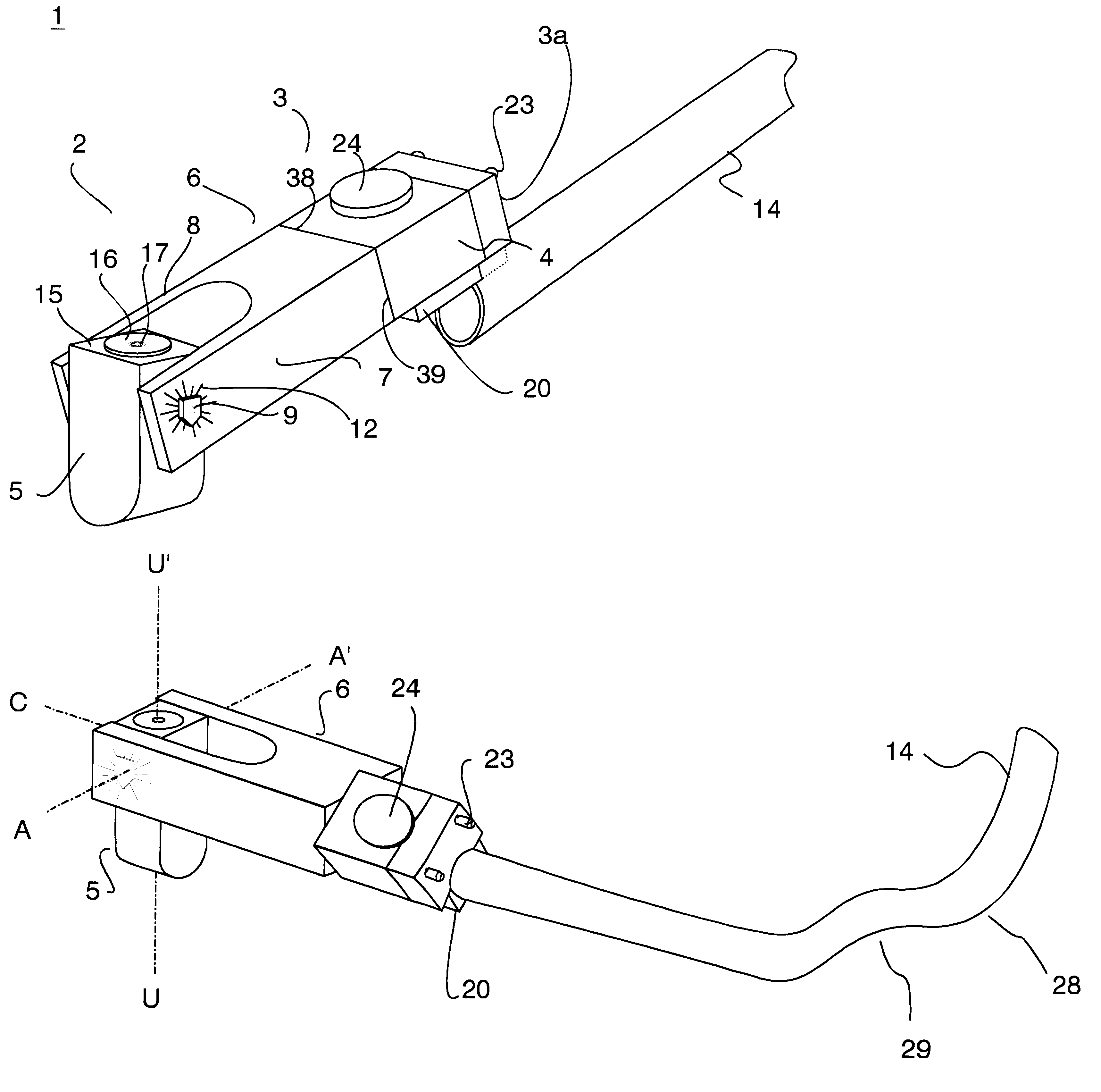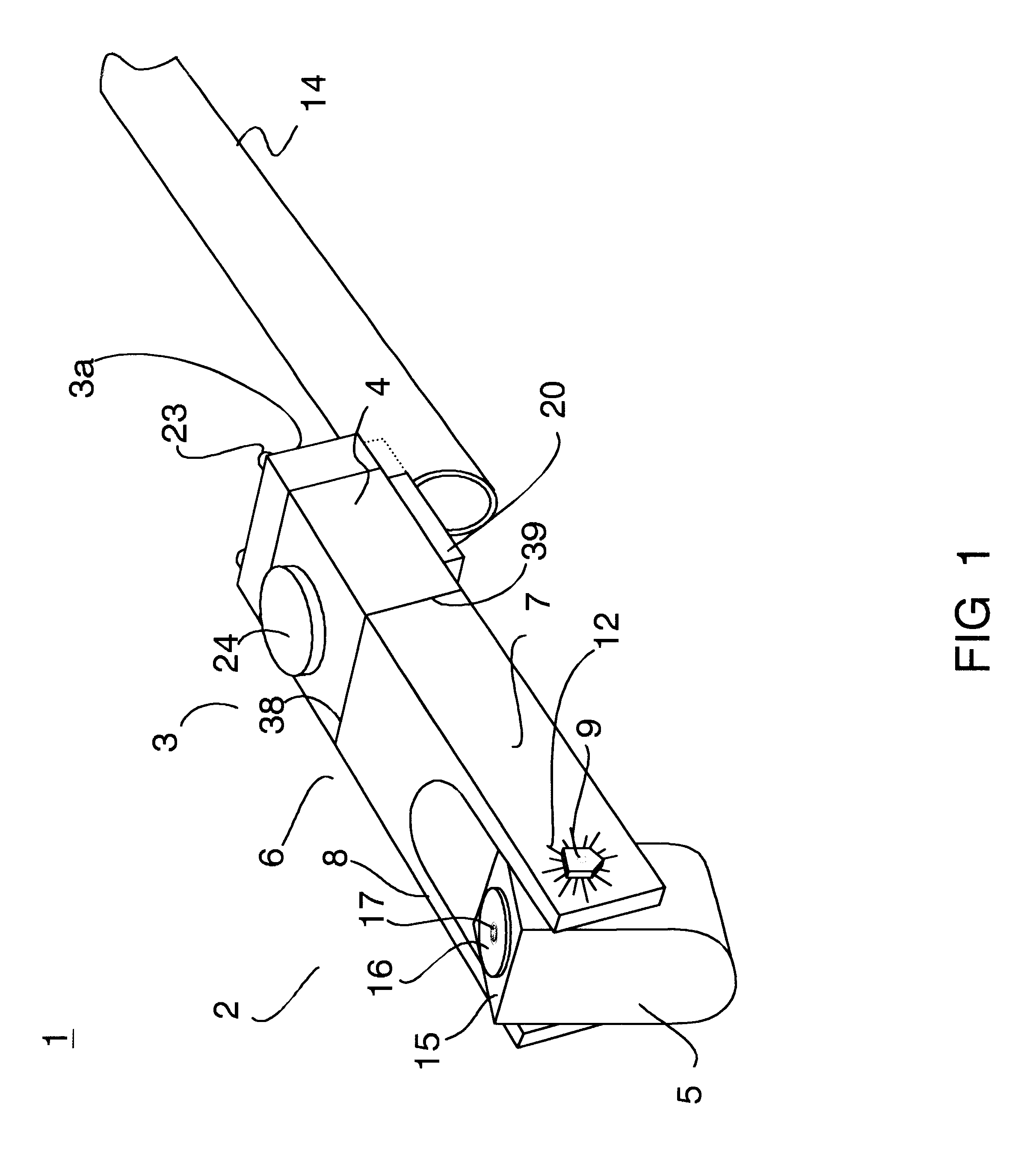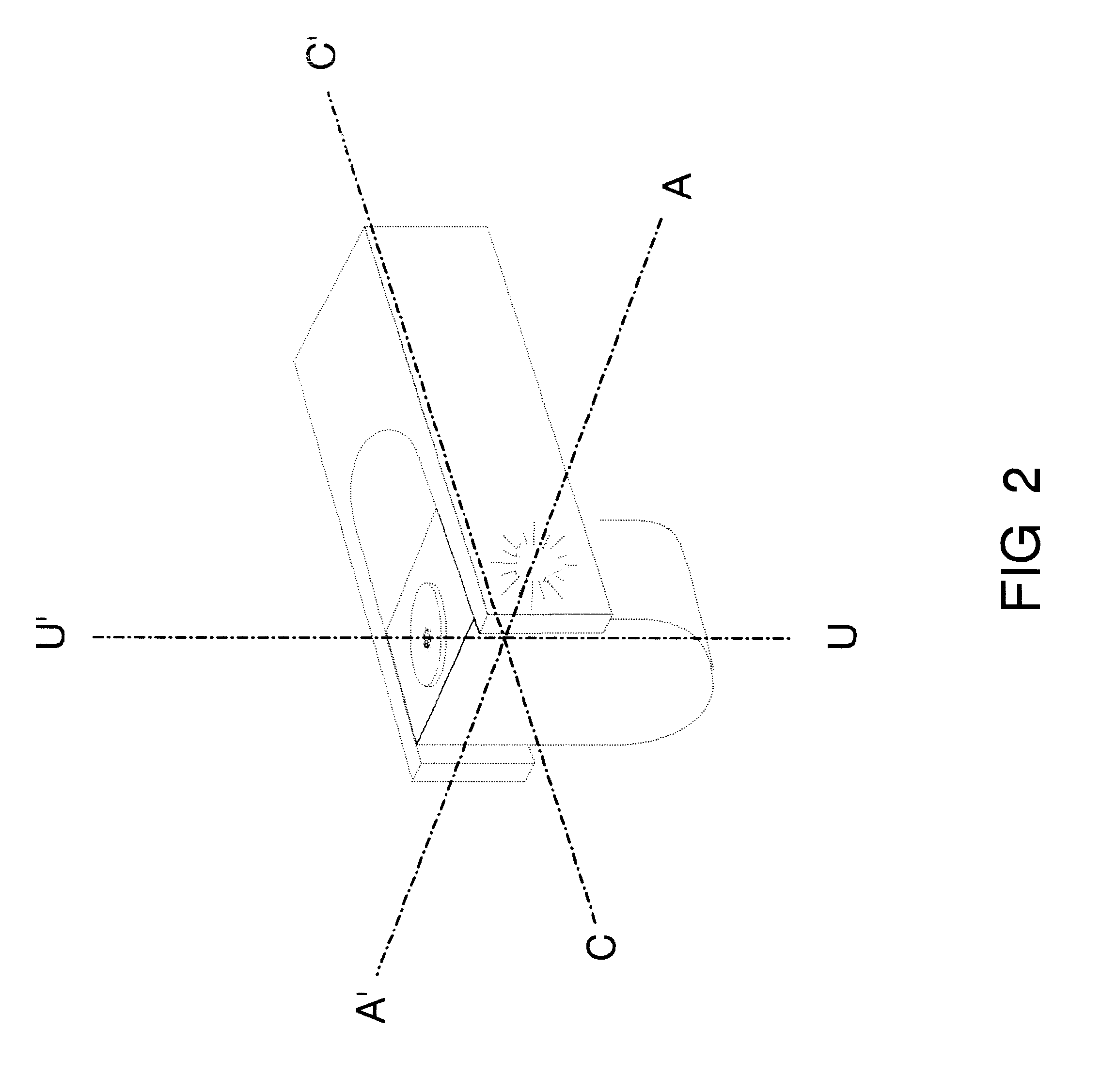Pipe-bending alignment device
a technology of alignment device and pipe, which is applied in the direction of mechanical measurement arrangement, instruments, and mechanical means, etc., can solve the problems of inconvenient installation, unsatisfactory dogging, and difficult to ensure that the bend being introduced in the pipe lies in the plane defined by a prior bend,
- Summary
- Abstract
- Description
- Claims
- Application Information
AI Technical Summary
Benefits of technology
Problems solved by technology
Method used
Image
Examples
Embodiment Construction
The bend-angle-and-bend-plane guide 1 of the present invention is shown in its Preferred Embodiment in FIG. 1. It consists of two main parts: a gauge section 2 and a mounting section 3. A mounting clamp 4 located at a proximal end 3a of the mounting section 3 provides the means by which the guide 1 is affixed to a pipe 14, the pipe to be bent (typically by use of a bending tool, such as is depicted in FIG. 4a by the stylized bending tool 50).
The mounting section 3 is displayed in more detail in FIG. 3a and FIG. 3b, which illustrate that the clamp 4 includes a removably attached outer jaw 19, a removably attached inner jaw 20, and a thumbscrew 24, the clamp-tightening means used in the Preferred Embodiment. This is illustrated best in FIG. 3b, which shows a cutaway piece of the pipe 14 clamped between an outer-jaw clamping surface 21 and an inner-jaw clamping surface 22. The outer-jaw clamping surface 21 is a concave cylindrical surface having a radius of curvature r equal to that of...
PUM
| Property | Measurement | Unit |
|---|---|---|
| Angle | aaaaa | aaaaa |
| Angle | aaaaa | aaaaa |
| Angle | aaaaa | aaaaa |
Abstract
Description
Claims
Application Information
 Login to View More
Login to View More - R&D
- Intellectual Property
- Life Sciences
- Materials
- Tech Scout
- Unparalleled Data Quality
- Higher Quality Content
- 60% Fewer Hallucinations
Browse by: Latest US Patents, China's latest patents, Technical Efficacy Thesaurus, Application Domain, Technology Topic, Popular Technical Reports.
© 2025 PatSnap. All rights reserved.Legal|Privacy policy|Modern Slavery Act Transparency Statement|Sitemap|About US| Contact US: help@patsnap.com



